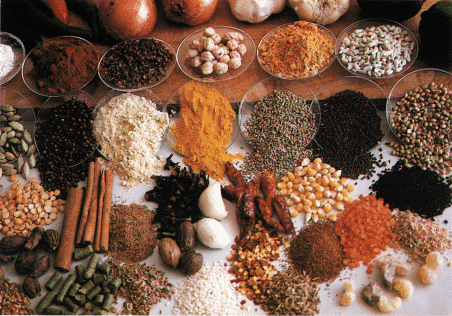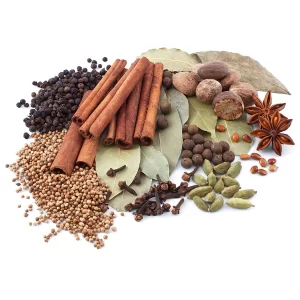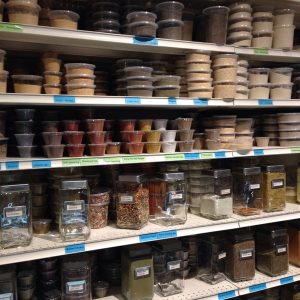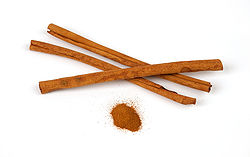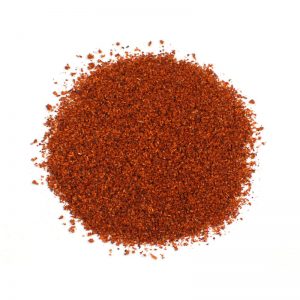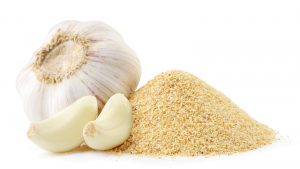Beyond salt and pepper, what else do you need in the way of spices?
Certainly, most of your selections will depend on your own taste and the type of cooking that you do. Spices are usually something that you will accumulate over time. You don’t need to buy everything at once. But there are some “usual suspects” that we can put on our Pantry Basics list.
I should also point out here that where you buy your spices matters. I understand that many of you may not have that many choices. Most spices do go bad or lose potency over time, although often slowly. Whole spices last longer than ground ones. Often the cost of whole spices is worth investing in a small grinder, like a coffee grinder, just for them. Supermarket spices probably have been sitting for a long time. Even sealed, they are losing potency. The best places to buy spices are spice shops. If you live in a large metropolitan area, there’s probably one around somewhere. If there isn’t there are many reputable suppliers available on the Internet and through mail order. The advantage of these shops is they usually have a higher rate of turnover for their inventory, meaning the spices are fresher. At the very least, the store’s personnel will know about their products and be able to offer advice on the best buys for your needs. The cost might be higher than what you pay in a supermarket, but probably less than you might expect. While cost is not always a measure of a spice brand’s quality, it’s a good place to start.
Whenever possible, I go to a small spice shop at the farmers’ market I frequent. They are always busy, which means their products are more likely to be fresh compared to the supermarket. There’s also a wider range of spices. In my area, there is also another spice company with a good national reputation and a really great catalog.
Looking in my cupboard I picked out four spices I felt I could not do without. Those will make up my pantry basics “Must have” list.
Cinnamon. Many of us are familiar with this mixed with sugar and used in lots of sweet foods. But cinnamon has uses that go way beyond that. In many North African dishes, cinnamon is the main ingredient along with other aromatic spices like nutmeg, cumin, and coriander. I use this every day, usually on top of my coffee grounds. Many researchers say cinnamon helps control high blood sugar. Real cinnamon comes from the South Asian country of Ceylon. It is the bark of a tree that’s a member of the evergreen family. But this is extraordinarily expensive and very hard to find. Most of what’s labeled cinnamon we see are actually from a related tree called cassia. Real cinnamon is much lighter in color. Cassia comes in two forms, sticks and ground. Don’t think that if you grind up the sticks, also called quills, you’ll get ground cinnamon. These two products come from different parts of the tree. This spice has been used since the earliest recorded civilizations.
Chili powder. This mixture is usually made of cumin, garlic, salt, oregano, and cayenne pepper. It is useful for more than just making chili. A little sprinkled on scrambled eggs will really liven up the flavor. There are many different mixtures, and all have at their base dried red chili peppers. Since there are many varieties of these peppers around the world, the possible combinations are endless and vary from one cuisine to another. To me, the combination of the hot spice and the aromatic quality of cumin is what makes this a pantry staple.
Paprika. This is also a ground, dried red pepper, but is usually red bell pepper, making it milder than that found in chili powder. The peppers used are also usually smoked. This powder has more sweetness and delicacy than most hot spices. This gives it a subtlety that’s hard to pick out by itself, but you miss it if it isn’t there. Hindu legend says the word paprika comes from a famous religious figure. But most people claim it comes from the Hungarian word for pepper. More than for taste, paprika is often used for color, a poor man’s saffron.
Garlic powder. Sometimes, no matter how finely you mince or chop, regular fresh garlic is just not the best choice. Garlic is a member of the onion family and is used in many cuisines around the world. It grows naturally and is said to be the meaning of the name Chicago. Having lived there I can easily believe that. There is that certain … uh … scent in the air. Garlic powder is simply dehydrated or dried garlic then ground. It has much of the same qualities as fresh garlic but is usually mixed with preservatives and salt. Try to find plain dehydrated garlic, which will be worth looking for. Remember to have a light hand when using any form of garlic. Its strong flavor oils can cause bad breath and body odor, even in its dried form.
